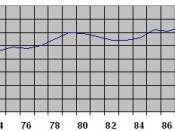In 1982, the Young Offenders Act [YOA] was established. It replaced the Juvenile Delinquents Act [JDA] of 1908 and its main objective was to guarantee the rights and freedoms of Canadian Youth were being met. Many revisions and opportunities arose with the passing of the YOA. With the passing of the YOA, it provided the young offenders of Canada with extended rights, chances for rehabilitation, and also therapy institutions. The YOA takes into concern such elements of age, maturity, reasonableness, and seriousness of the crimes committed (Barnhorst & Barnhorst, 2004). Barnhorst & Barnhorst (2004) explained that the act was useful to Canadian Youth for an abundant of time however, some weakness become clear since the act was passed. Under the YOA, too many young people were being charged and arrested. Also, despite other programs being available, they were being mostly used for more minor offences committed by the youth in society.
With that being said, the YOA went back to legislation to fix some of its problems and in return a new act called the Youth Criminal Justice Act [YCJA] or also known as Bill C-7 was enacted and became effective in April 2003 (YCJA: Summary and Background, para.4). Due to society's concern with youth involvement in crime, the Canadian government has developed an improved version of past acts. By making these revisions, Canadian society will achieve valuable policies that will aid with today and the future's youth justice system through three objectives: those young offenders will face meaningful consequences for their actions, improving rehabilitation of young offenders, and placing much more emphasis on the prevention of youth crime.
In past the YOA has not provided clear guidance to judges on sentencing and does not provide a specific purpose of sentencing. The principles of the YOA are inconsistent with each...


